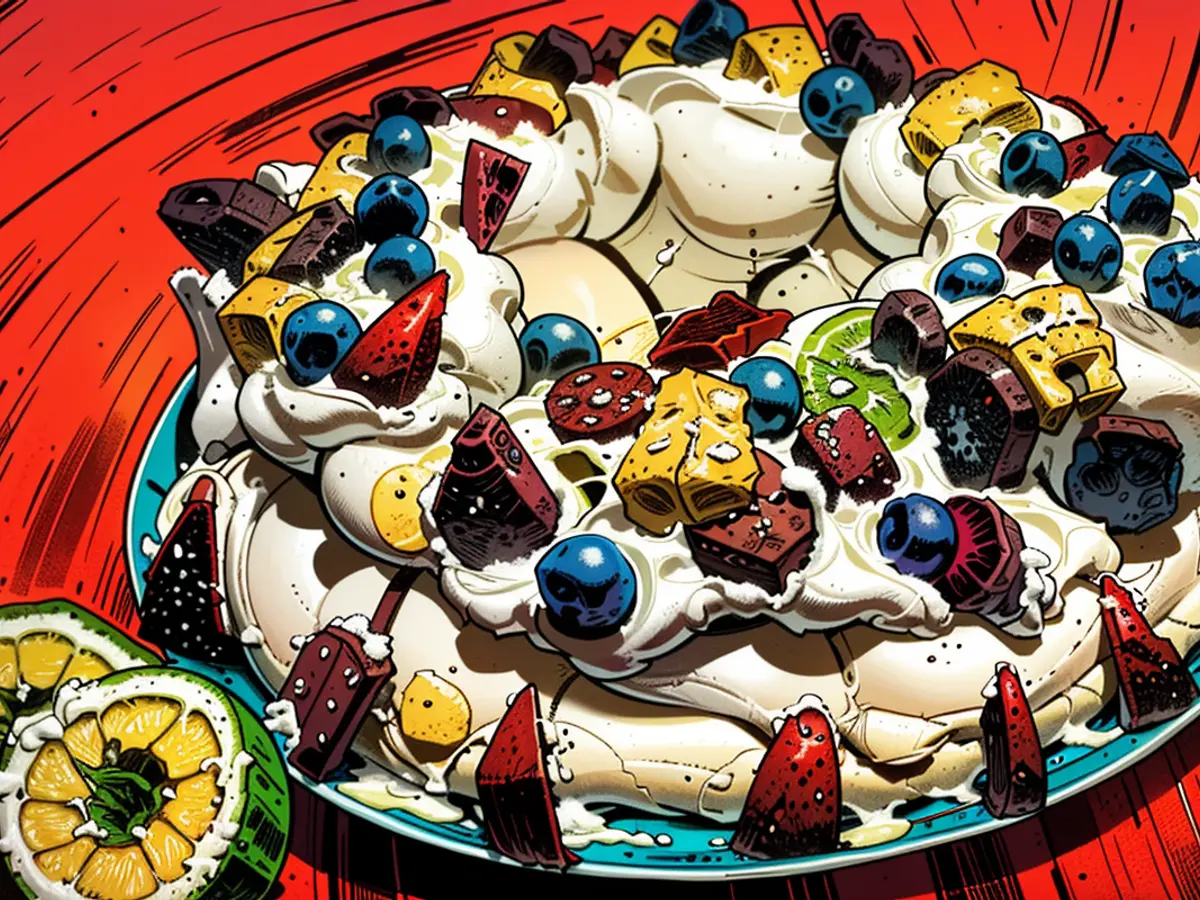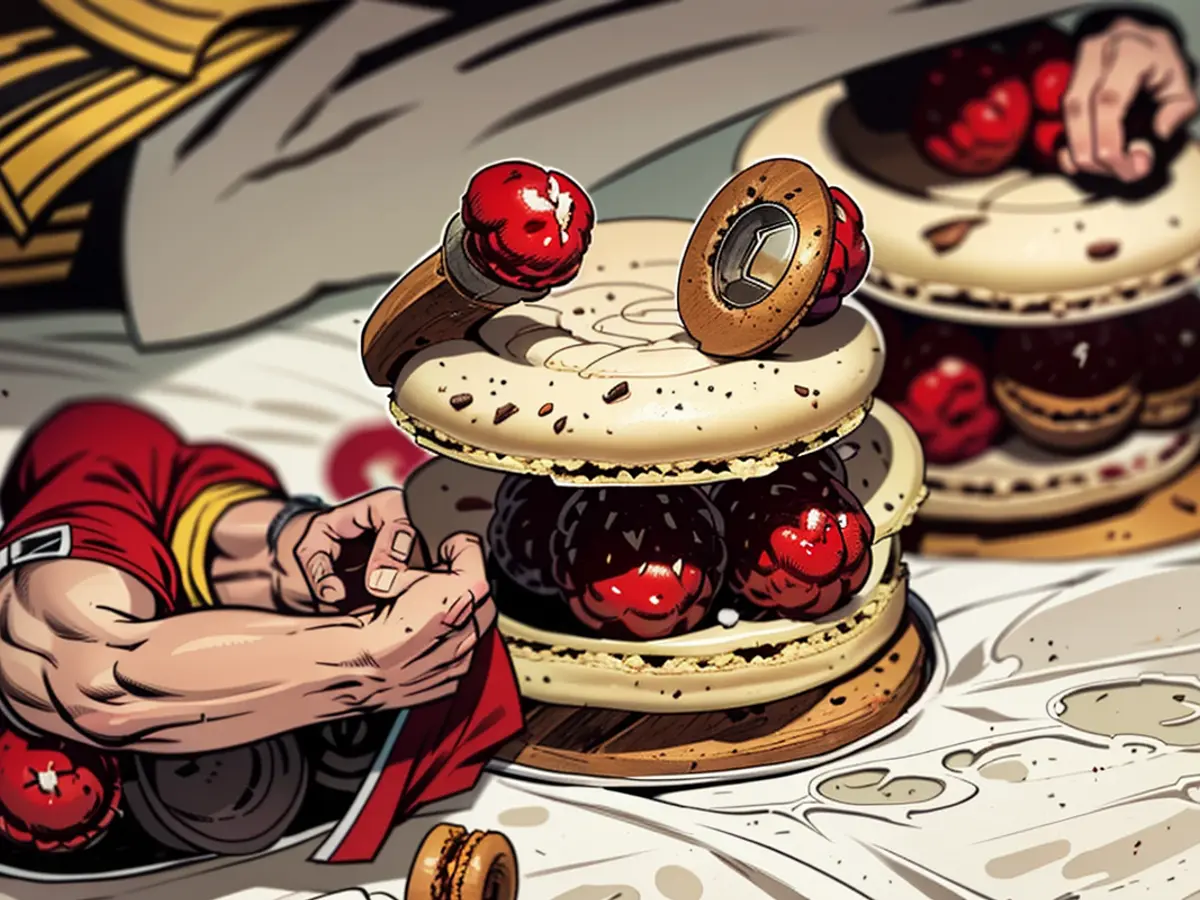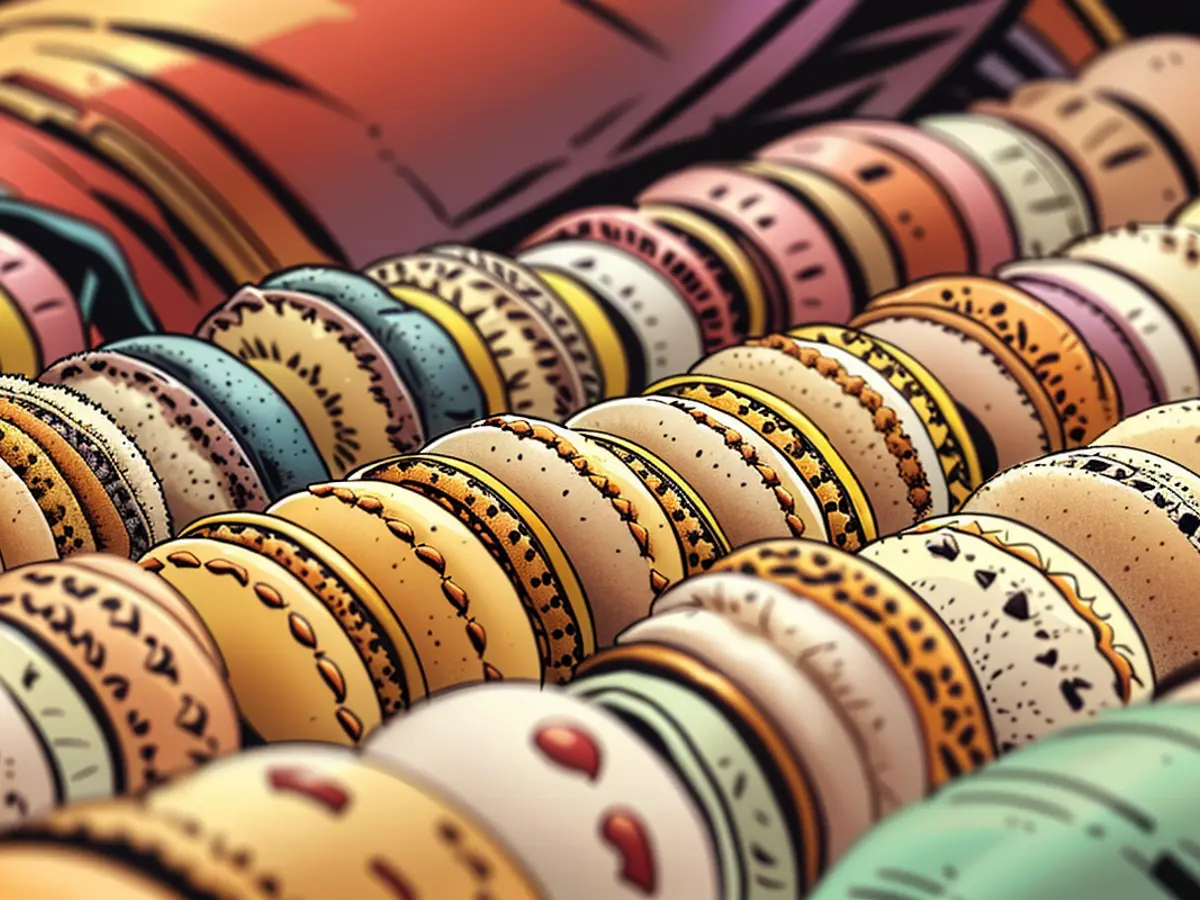The treat transforms into a high-end dessert option.
Once upon a time, simple desserts like pudding, applesauce, or rice pudding were popular. But now, with the rise of sophistication, children favor stylish treats like Macarons or Pavlova. Let's explore this delicious transformation!
Few still mix up the term "Macaron" with France's President Macron. Instead, Macarons have become a trendy dessert sensation, even making an appearance at discount stores across the country. These delightful creations, composed of a crispy exterior and a creamy center, are representative of this dessert and snack revolution.
As we move up the age brackets, the perception of desserts changes. Baby Boomers have a soft spot for applesauce, compote, and rice pudding. For middle-aged Germans, chocolate pudding or ice cream is their dessert of choice. In stark contrast, the children and youth of today relish discussing their love for Macarons and delight in the taste of Pavlova.
Many restaurants today offer a wide array of dessert options, inspired by American cuisine. One may find a dazzling selection of cakes, creams, crepes, ice cream, shakes, and waffles on the menu. Yet, sometimes, less is more. As Peter Peter, a cultural scientist, points out, "The taste for desserts has drastically evolved."
Historically, German cuisine was known for its frugality, with dessert often being viewed as a leftover dish. Today, however, desserts have taken on a more luxurious quality, shifting towards petite art forms, moving away from large portions of jelly or fruit compotes.
Italian and French culinary traditions have also played a significant role in elevating desserts to new heights. Desserts such as panna cotta and tiramisu have their roots in Italian cuisine, while crème brûlée, mousse au chocolat, éclairs, and macarons have their origins in France.
Despite this evolution, classic desserts like hot raspberry ice cream and North German red grout, as well as Austrian pastries like apple strudel, palatschinken, and Kaiserschmarrn, continue to maintain a loyal following in German-speaking countries. In high-end restaurants, Peter notes that desserts have gained equal importance on the menu.
Something uniquely enticing about modern dessert plates, according to Peter, is that despite the small individual items, the overall portion size often turns out to be quite large. Many individuals, particularly women, eagerly anticipate the sight of these beautifully crafted dessert plates. The phrase "dessert stomach" signifies the belief that there's always room for something sweet post-meal. Even those conscious of their figure grant themselves a dessert indulgence.

Modern snack trends such as cupcakes, mochis, baklava variants, and macarons present themselves in a new light in this context. These tiny treats, such as macarons, which measure about the size of a 2-euro coin, are viewed as an acceptable choice. The ethereal Pavlova dessert, in particular, seems almost weightless.
Macarons – A testament of Parisian Elegance
The delicate and vibrant Macarons embody Parisian sophistication. A symbol ofpop-cultural fame emerged more than 20 years ago when director Sofia Coppola, in her film "Marie Antoinette," presented the doomed queen (played by Kirsten Dunst) reaching for the treat in spirited colors. Catherine de Medici, who was a married queen in the 16th century, is rumored to have introduced the almond flour cookies from Italy to France. The famous double-decker sandwiches, filled with cream or jam, were actually created in 1930 by Pierre Desfontaines, a cousin of the Ladurée family. The renowned Ladurée brand continues to flourish today. Renowned pastry chef Pierre Hermé is hailed as the innovator of macarons, introducing new recipes and fragrant flavors to the market in Paris at the end of the 1990s. In Switzerland, macarons are commonly referred to as Luxemburgerli, including at Sprungli in Zurich.**
Pavlova – Named for a Ballerina
Pavlova is a dessert named after the famous Russian ballerina Anna Pavlova. This delightful food item first appeared in the 1920s and became known for its lighter-than-air meringue base and toppings of whipped cream, fresh fruit, and sometimes passionfruit curd. The exact origin of the Pavlova is a subject of debate between Australia and New Zealand, both of which claim to be its birthplace. Regardless, the dessert has since become a cherished international favorite.
Aussie delight, known as Pavlova, is a dessert embracing cream and fresh fruits, all enveloped in a crispy meringue shell. Its moniker originates from Russian ballet dancer Anna Pavlova (born 1881, passed away in 1931), who graced Australian and New Zealand stages during the festive season of the 1920s. A creative chef decided to pay tribute to her in the form of this delectable, snow-white delicacy. The tale goes that the dense, creamy texture was inspired by the wintry landscapes of her Russian homeland. Uncertainty surrounds the dessert's initial appearance – whether it was born in Australia or New Zealand. Interestingly, Pavlova's popularity has made a comeback in Europe, with an Estonian café chain opening a dedicated Pavlova café on the Kurfürstendamm in Berlin this summer.
Despite the widespread popularity of modern desserts like Macarons and Pavlova, traditional German desserts like apple strudel and Kaiserschmarrn still hold a special place in German-speaking countries. The European Union, with its diverse culinary heritage, has played a role in the global popularity of these tantalizing treats, allowing them to be freely traded and enjoyed across borders.
Macarons, with their vibrant colors and French origins, have become a symbol of Parisian elegance, gaining fame in films and promising a taste of luxury to those who indulge in them. The European Union, as a region known for its rich cultural exchange, has also contributed to the spread of Macarons, allowing them to be enjoyed throughout its member states.







